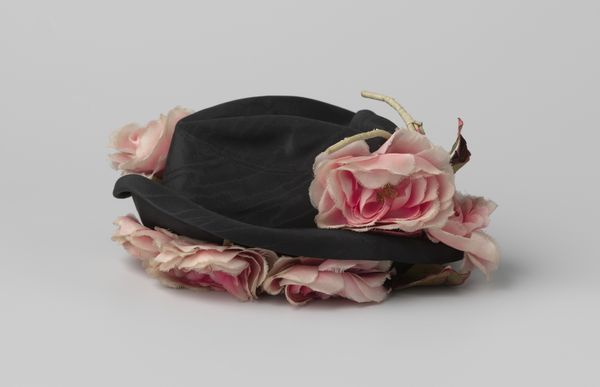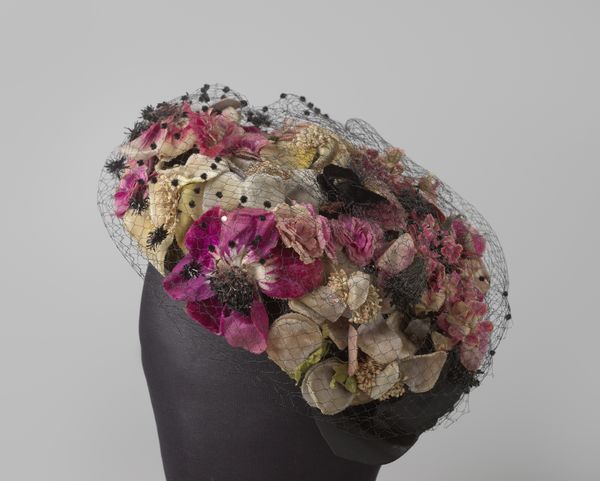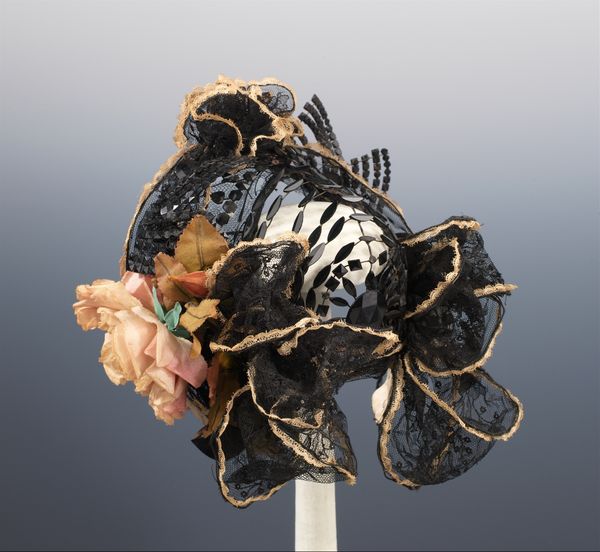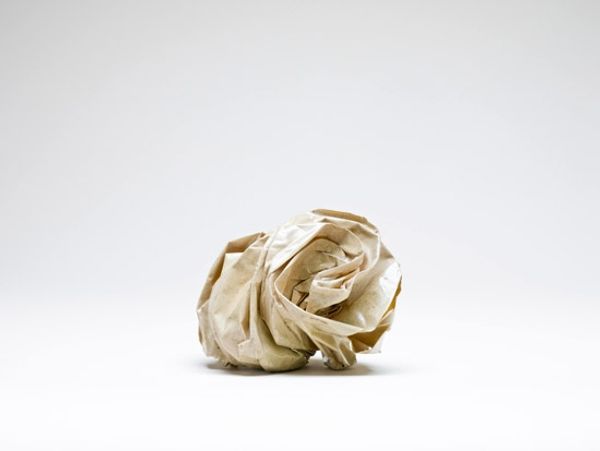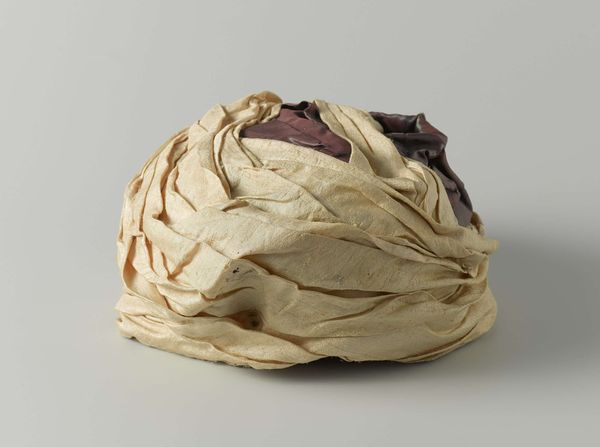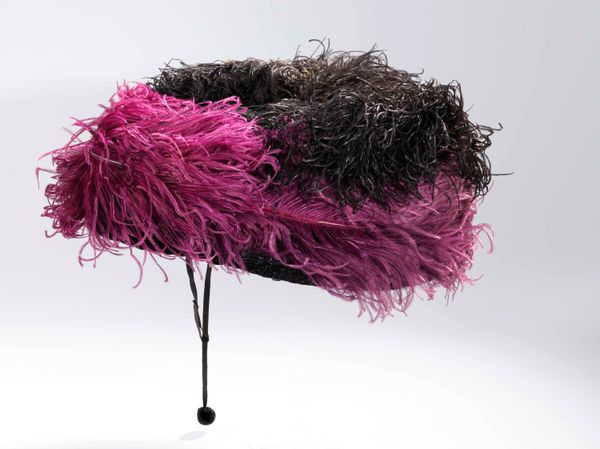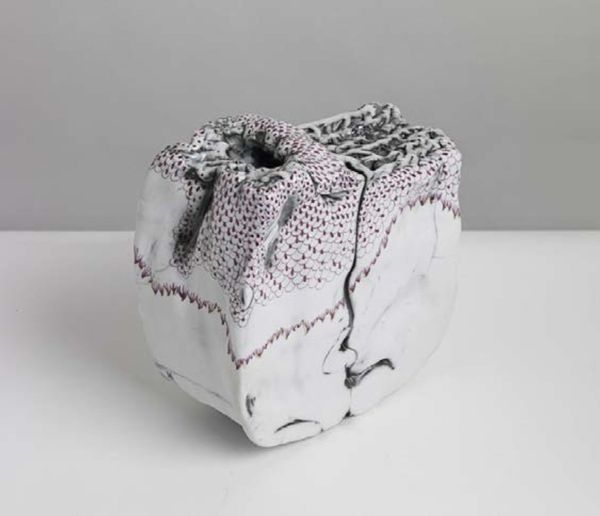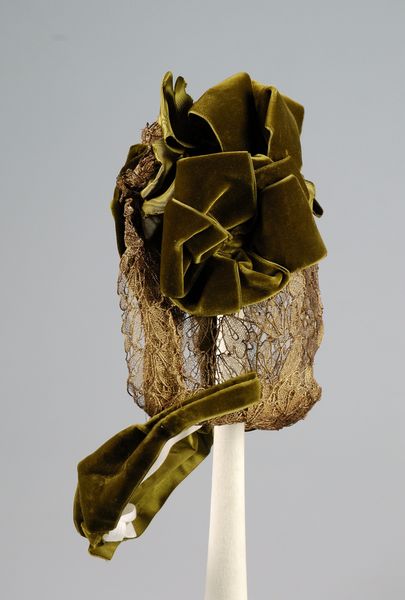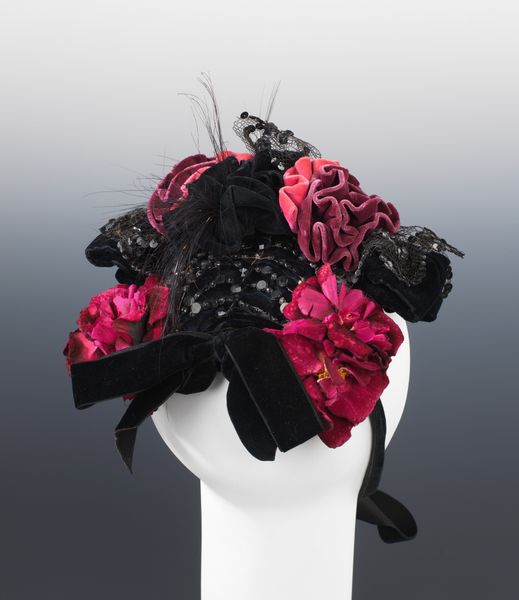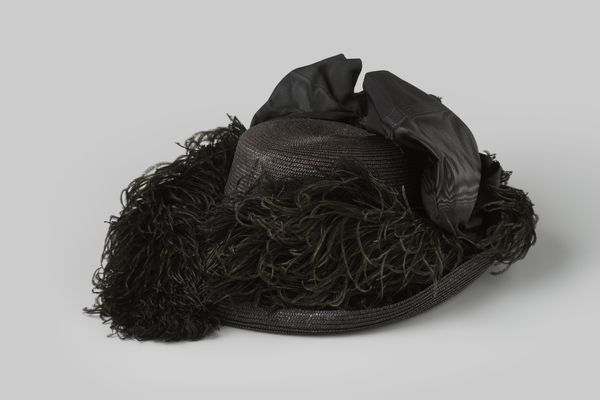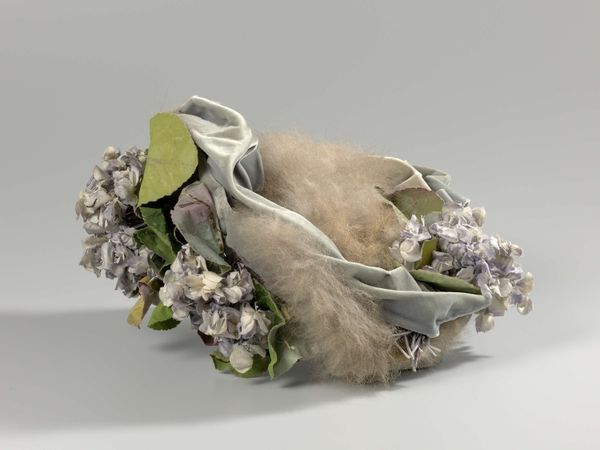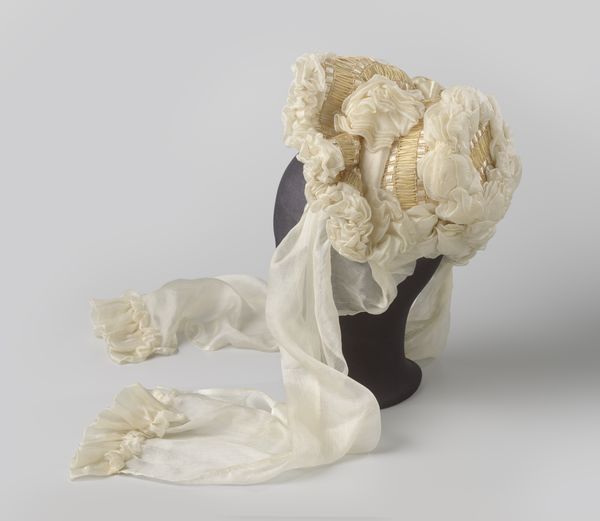
Kleine hoed van roze bandstro versierd met linten van zwarte gaze de lisse, zwarte fluwelen linten en een mosgroene bloem c. 1870 - 1875
0:00
0:00
mixed-media, textile
#
mixed-media
#
textile
Dimensions: length 18 cm, width 15 cm, length 70 cm
Copyright: Rijks Museum: Open Domain
Editor: This confection is called "Kleine hoed van roze bandstro versierd met linten van zwarte gaze de lisse, zwarte fluwelen linten en een mosgroene bloem"— or, "Small hat of pink ribbon straw decorated with ribbons of black gauze de lisse, black velvet ribbons and a moss green flower." It was created around 1870-1875 by P. Mars & Co. It's hard to ignore the material juxtaposition here; what stories can you unlock from this piece? Curator: Certainly, at first glance, this hat, seemingly a trivial object, speaks volumes about 19th-century social structures. Consider the sheer extravagance and artistry—it’s not merely functional but rather a statement of status and wealth. Who would have worn this, and in what social settings? Editor: Presumably a woman from a well-to-do family, attending a social event? The delicate nature of the hat does seem more appropriate for a ball than a market! Curator: Precisely. Hats of this era functioned almost as social billboards, advertising a woman's—and by extension, her husband's—economic standing. Moreover, the choice of materials - the silk gauze, the velvet, the meticulous floral arrangement - what do you think this says about the labor practices of the time? Editor: It points to specialized artisans, potentially women working in poor conditions in sweatshops, feeding this demand for luxury goods... Curator: Exactly. And the black velvet ribbon? Black was more than a color, it was a marker of mourning, yet also a fashionable hue. This hat navigates complex socio-cultural waters: tradition, wealth, fashion and maybe even mourning depending on the wearer's circumstances. What seems a small fashion object really becomes a lens through which to view a whole society. Editor: I hadn't considered the mourning aspect and how something so ornamental could serve as a societal commentary on so many different levels. Curator: Indeed, it exemplifies how museums give the public the chance to reflect on and interpret objects with critical lenses to discover rich cultural and social history from an aesthetic encounter.
Comments
No comments
Be the first to comment and join the conversation on the ultimate creative platform.
